Archived Water Damage Blog Posts
Take Steps to Prevent Plumbing Leaks
7/10/2023 (Permalink)
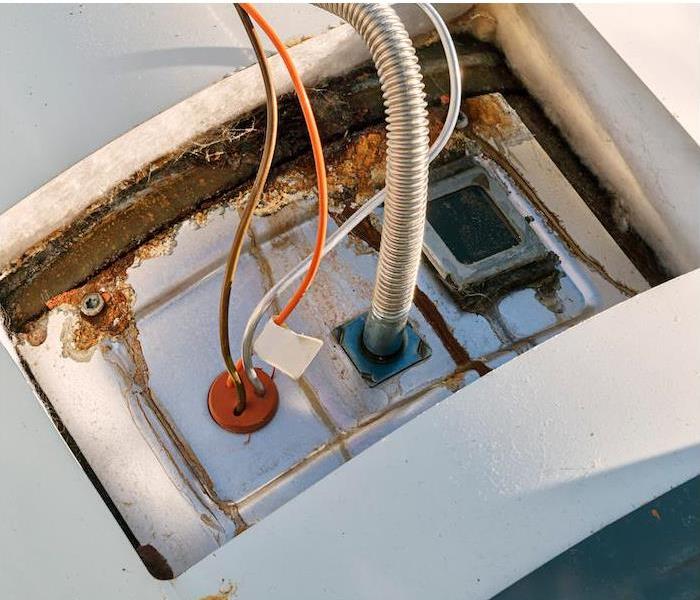 SERVPRO of Douglasville can help at the drop of a hat when you experience any water emergency.
SERVPRO of Douglasville can help at the drop of a hat when you experience any water emergency.
Plumbing leaks are no joke. They can spring up instantly and cause dramatic and costly damage before it can be brought under control.
In fact, the average household in the U.S. experiencing a leak loses 10,000 gallons of water per year—with over 1 trillion gallons nationwide combined yearly! While no one knows whether there is going to be an accident, there are still numerous methods to decrease the chance of a costly plumbing leak in the house.
By maintaining your plumbing, you can lower the risk of a plumbing leak and reduce the damage if one happens. Let’s consider what areas you can regularly inspect and maintain to prevent water damage in the home:
Appliance Water Supply Lines. Every appliance that uses water has water supply lines that are generally made up of plastic or metal tubing. As a result, it is critical to monitor these lines on a regular basis. Keep an eye out for corrosion, discoloration of the pipe itself and the flooring and walls around it, as well as calcium buildup in the supply line. One common modern preventive measure would be to consider upgrading to flexible stainless steel when replacing these lines.
Water Heater. Be sure to follow the maintenance instructions on your water heater carefully. A water heater can burst due to old age and devastatingly flood the room around it in minutes, potentially causing severe and costly damage to your home. A water heater should be inspected by a professional plumber every few years, and if it’s in a location where a leak would be truly devastating, consider installing a leak detector.
Drains. All sinks, disposals, showers, tubs and toilets should be consistently maintained and clean of debris. Make sure that you and other family members are aware of what should and should not be flushed or poured down the kitchen sink. Additionally, if you have a family member that is an over-consumer of toilet paper, consider installing a bidet to prevent build up in your pipes.
Finally, if a leak has sprung out of control, it’s important to know where the main water valve is and how to shut it off. It’s essential that everyone in the home is aware of how to shut the water main line off in the event of an emergency, considering you never know when the emergency can happen.
SERVPRO can help at the drop of a hat when you experience a water damage emergency. Call the experts at SERVPRO of Douglasville. We are available 24⁄7 to respond immediately and get the job done professionally.
Water Damage in Your Bathroom
6/23/2022 (Permalink)
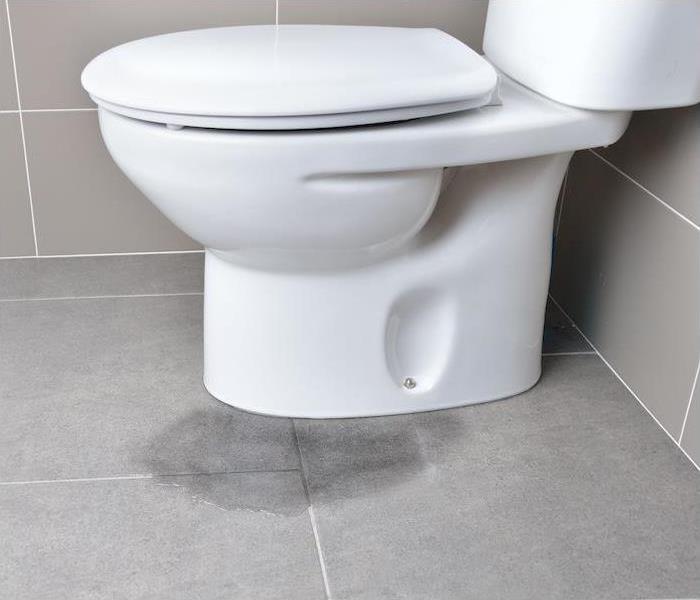 Should you experience any water damage, call SERVPRO of Douglasville, We are available 24/7.
Should you experience any water damage, call SERVPRO of Douglasville, We are available 24/7.
Because bathrooms use a lot of water, it’s likely that some of that water may seep into the walls and flooring, producing water damage. And if you’re not careful, you might wind up with damage that requires considerable and costly efforts to restore.
In fact, the average cost of bathroom water damage repairs is over $3,000 in the U.S.
While there is always a potential that water can cause damage in your bathroom, if you follow these easy steps, you can avoid costly water damage. Prevent water damage to your bathroom by following the advice below.
Check for Leaks. Check for symptoms of leaks on a regular basis, such as discoloration or soft spots on walls or floors as well as musty odors. Test the walls and floors by pressing in to them to see whether certain places are softer than others. Look for leaks under vanities and around the shower or tub and verify that there isn’t any leaking. If any of these issues occur, track out the source of the leak and get it repaired.
Ensure Proper Sealing. Properly sealing areas of your bathroom that could otherwise allow water to leak out into your walls and flooring can make all the difference when it comes to preventing damage to your bathroom. Prevent water from leaking behind walls and under floors by replacing broken, damaged or missing tiles in your shower, flooring and backsplash. In the same way, ensure your sealing is fresh and working properly. Replacing cracked or failing grout and caulking around sinks, tubs and showers with a silicone-based bathroom-grade caulk can make all the difference in water-proofing your bathroom.
Continually Inspect Your Bathroom. Maintain your leak-free bathroom by regularly checking the floor and walls for water after showering or bathing, drying or removing it immediately if there happens to be any. Additionally, don’t let any water stay standing in the shower or tubs by draining it completely. This helps to prevent the harm that standing water might cause.
SERVPRO has the expertise to assist you with all forms of recovery from water damage. When you discover water damage in your bathroom, call the experts at SERVPRO of Douglasville. We are available 24⁄7 and seven days a week, including all holidays because disasters don’t wait—and neither do we.
Do you need a sump pump?
6/7/2022 (Permalink)
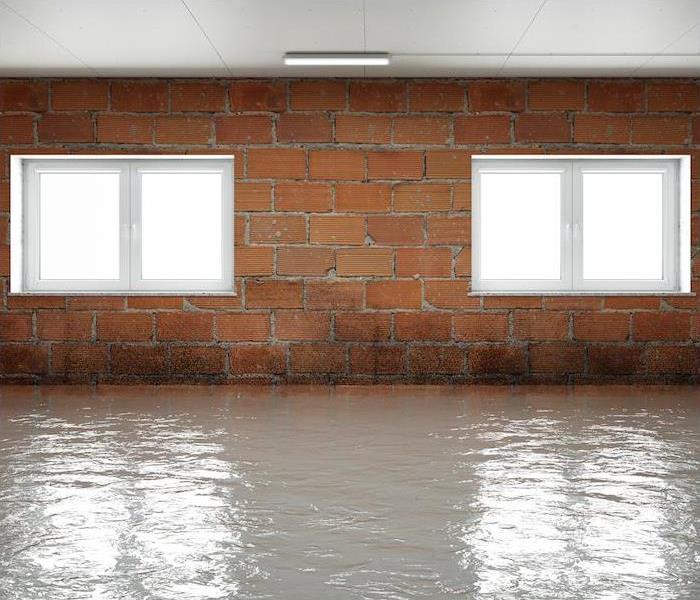 Call the experts at SERVPRO of Douglasville to get you back to dry. We are on call 24/7 to take care of any immediate need.
Call the experts at SERVPRO of Douglasville to get you back to dry. We are on call 24/7 to take care of any immediate need.
You may have heard of someone talking about their sump pump after heavy rain. Perhaps they were talking about how if it weren’t for their sump pump, their basement would have flooded, costing them big-time in damages.
Let’s take a look and see if a sump pump is right for you and your property.
WHAT IS A SUMP PUMP?
A sump pump is a device that can be installed beneath your home’s lowest point, such as the basement or crawl space. This little but extremely useful tool can help prevent flooding.
The pump is always on standby, waiting to be activated. When the soil surrounding your home gets oversaturated after a heavy rain, excess water flows toward the sump pit, which fills up with water.
The sump pump is activated, and the pump is turned on, removing water from the pit and draining it away. A sump pump prevents the groundwater from rising above the level in which it is installed, preventing flooding. In many ways, sump pumps are essentially immediate flood insurance.
SHOULD YOU INSTALL A SUMP PUMP?
There are many advantages to installing sump pumps if your property needs one. Let’s take a look at the following and determine if you should install a sump pump at your property:
- If you live in a region where there is significant rain and/or snow. Here in Georgia, flooding from storms of different kinds are very common, especially throughout the spring and summer seasons. It’s very common to see basements in this area flood after these storms.
- If your house is in a floodplain, you will want to consider a sump pump. Groundwater levels are more likely to rise after heavy rains, snowstorms and spring runoff in areas with poor drainage and lower elevation properties in valleys surrounded by higher elevation hills.
- If your basement has previously flooded, it is a good idea to install a sump pump, as it’s likely it won’t be the last time.
- If you’ve finished your basement, consider installing a sump pump to safeguard your living space and protect carpeting, furniture and other items in your underground living space from flood damage.
If your basement floods, call the experts at SERVPRO of Douglasville to get you back to dry quickly and professionally. We are on call 24⁄7 to take care of your emergency immediately.
The Sights, Smells, and Sounds of Water Damage
4/21/2022 (Permalink)
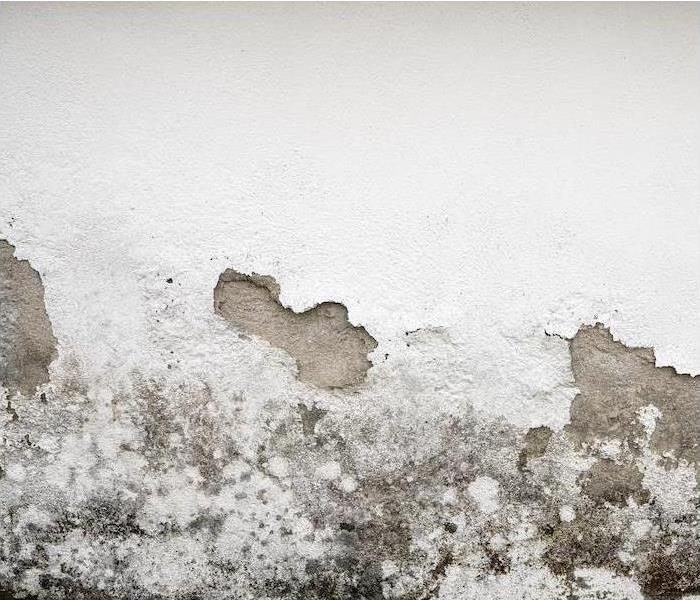 ?If you suspect water damage in your home, call SERVPRO 24 hours a day.
?If you suspect water damage in your home, call SERVPRO 24 hours a day.
Water damage can hide for a little while before revealing itself in your home, but it can only hide for so long. Depending on the type and location, it may be a matter of a few minutes, hours or days before you notice something’s going on, but eventually the water will collect itself somewhere or affect something you can’t help but notice.
Let’s look at the most common ways you can catch a leak in the act, and hopefully put a stop to it before it becomes a full-blown problem.
Spots. They call those fraud protection overlay images “watermarks” for a reason. One of the absolute telltale signs of water damage is noticing dark or wet spots on your ceiling or walls, both indicative of a leak from above. These can let you know there’s a problem on the roof or in the attic, or something happening with a pipe inside the wall.
Paint or drywall that flakes or bubbles. Paint can’t cover a water leak for long—eventually it will show in the form of cracking, bubbling or flaking. And drywall will expand, crack or otherwise fluff up as it becomes damp. (It will also weaken significantly.)
Puddles and pooling water. You clean up a puddle in the floor or under a cabinet, or you dry a wet spot in the carpet, only for it to come back. Uh oh. There’s something under there causing water to pool up and seep through.
Running water sounds. Like we said, water leaks can hide for a while before they become visible. But a keen ear in a quiet moment might help you catch something going on. Be on the listen-out for the sound of running water inside the walls when no plumbing is in use. You should also heed sounds like bubbling, gurgling or whistling from your water heater or plumbing in general.
Moldy smell. A musty, pungent odor can be a dead giveaway that moisture has gotten out of control or that water damage is evident in a basement or bathroom. If you catch that signature smell, mold is already growing and you need to take action.
Your utility bill. If your home doesn’t tell you about hidden water leaks, your utility bill may. If you notice an uptick without explanation, it could indicate a hidden leak—for example, a puncture or root invasion in an underground pipe that could lead to serious foundation problems.
If leaks lead to water damage, you’ve got a friend in the restoration community. Call SERVPRO to get yourself safely back in the dry.
The 411 on Commercial Water Damage Prevention
4/11/2022 (Permalink)
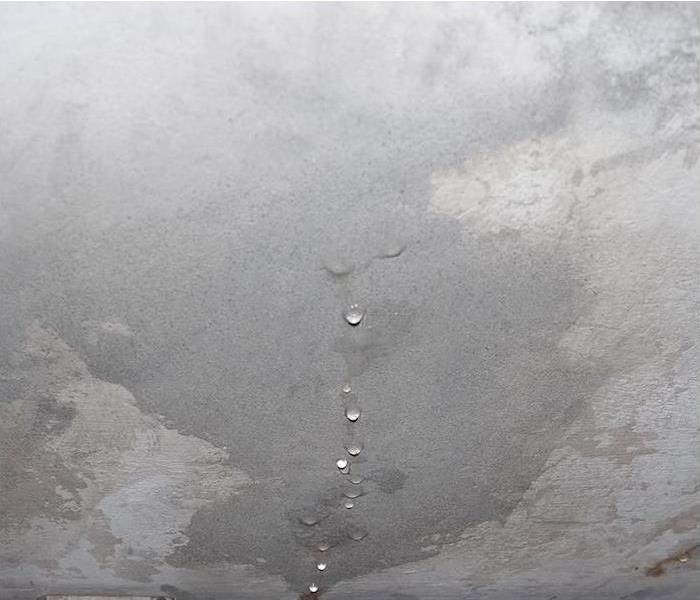 If your business is affected by water damage, reach out to your local restoration expert SERVPRO of Douglasville.
If your business is affected by water damage, reach out to your local restoration expert SERVPRO of Douglasville.
Water damage is often unanticipated and comes in all shapes and sizes, whether it is caused by a flash flood, a burst pipe or a leaky roof. No matter if it is pooling water in your ceiling that can go unnoticed or you’re standing in water up to your knees, water damage can cause significant untimely and costly interruptions to your operations.
In many circumstances, however, preventive measures can be taken to avert severe delays or property damage. The following are a few recommendations to inspect and prepare you in protecting your facility from water damage:
Check for plumbing issues. One indicator of plumping issues could be if you’ve observed a substantial increase in your water bill, a pipe or plumbing equipment is almost certainly to fault. You can check your walls, floors and ceilings for indications of leaks. Discoloration or mildew development is also a reliable indicator that a pipe is damaged or leaking. Whatever you discover, be certain to get it repaired as quickly as possible.
Install a water-sensing device. You can find water sensors available at practically any home improvement store. The devices provide alerts or alarms in the case of a water leak, allowing you to contain the damage and respond quickly. The majority of sensors may be connected to your smartphone or integrated with your facility’s security system, enabling you to get alerts even while you’re not on-site.
Look at the windows and doors. Water making its way indoors from outside during storms or rain is another frequent cause of water damage. Examine the area surrounding your windows, doors and any other exposed locations. Be sure to reseal any gaps or cracks using caulking that is waterproof. Additionally, refinish window or door trim to provide additional protection against decaying seals and trimming.
Regularly inspect the roof. Have an expert inspect your roof to discover places that might leak. Different types of roofing may need different treatments such as sealing on a regular basis to provide an additional layer of protection. Additionally, remember to clean the gutters to ensure that rainfall flows easily away from the roof. Take note of locations that are prone to drainage problems. Along the outside your building, be sure to look for spots that may be prone to water accumulation if the ground gets too wet. Consider getting the help of a landscaper or drainage specialist to do an inspection of the area and provide proper draining.
If your business is affected by water damage, enlist the help your local experts at SERVPRO of Douglasville. We are here to help 24⁄7 whenever disaster might strike.
Why Choose SERVPRO When Your Home Needs Reconstruction
4/7/2022 (Permalink)
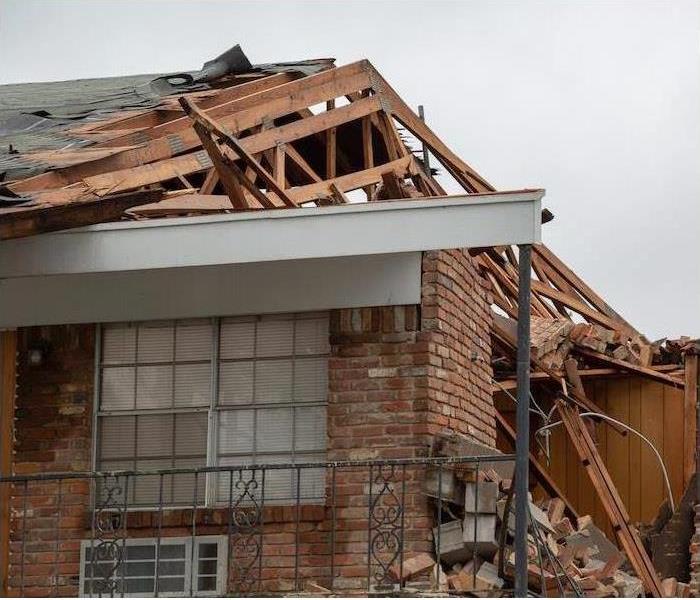 When damage happens at home, we’re ready to jump into action. Contact SERVPRO of Douglasville to get help right away.
When damage happens at home, we’re ready to jump into action. Contact SERVPRO of Douglasville to get help right away.
Not all emergencies are created equal. Sometimes the extent of a restoration need is to have carpet professionally dried, furniture restored or mild smoke smell removed—all things that are certainly within our capability.
But some emergencies take a bigger chunk out of your life, ruining whole areas of your home—your subfloor, drywall and even your framework. It’s in these times that you’ll be glad to know you’ve got a team on your side who can not only handle the cleanup, but also perform any necessary reconstruction, to restore your home to its original, preloss state.
Our first aim is restoration. We want you to be able to keep your original possessions, and we’ve got both modern and time-tested techniques to get them dried, sanitized and ready for use again.
But when something more is needed—when an electrical fire eats away your walls from the inside, for example—we can take care of everything, start to finish.
When you choose SERVPRO of Gordon, Murray, & South Whitfield Counties for reconstruction, that means all your needs are cared for by one team, with clear communication, synergy and expertise. You’ll have a faster, easier and more effective recovery time, plus the peace of mind knowing it’s all being handled by the industry leader with over 50 years’ experience in the field. And your insurance company will love you for keeping things simple.
Reconstruction requires expertise, because existing parts of your home have to be properly fitted to match reconstructed areas, which are built in or rebuilt to replace damaged ones. It’s not an easy task to make it look natural and seamless, but your SERVPRO of Douglasville team is up for the challenge.
Considering the widespread damage that can happen to your home because of a few inches of floodwater, it’s easy to see why reconstruction can become necessary. But you can rest easy knowing that should the need arise, your friends at SERVPRO of Gordon, Murray, & South Whitfield Counties have the expertise, tools and teams available around the clock to get your cleanup and reconstruction handled quickly, safely and completely.
When damage happens at home, we’re ready to jump into action. Contact SERVPRO when reconstruction and recovery are needed after water damage, fire or mold outbreak.
How Does Water Damage Lead to Mold?
3/14/2022 (Permalink)
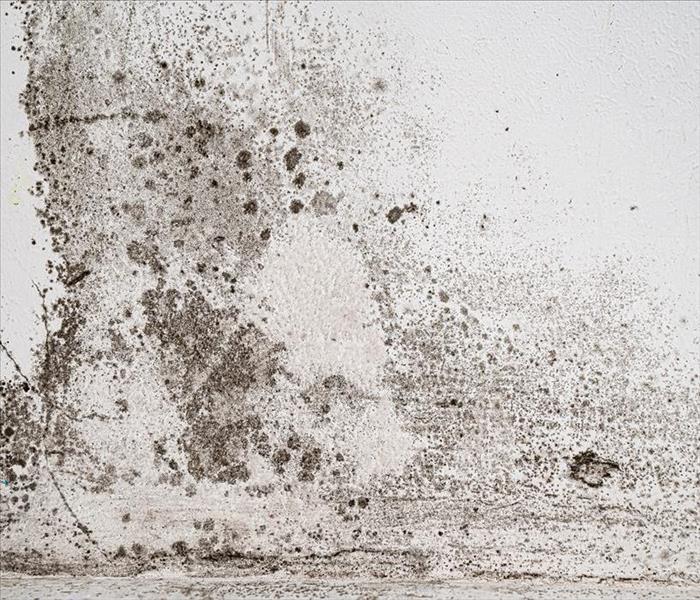 If mold invades your home, call SERVPRO of Douglasville today!
If mold invades your home, call SERVPRO of Douglasville today!
Water damage is something that no homeowner ever wants to experience, but unfortunately, it is a rather common occurrence. Between hidden leaks that can pop up in your plumbing system, water seepage in crawl spaces or surprise roofing issues, there are lots of ways that water damage can pop up in a home.
While water damage is an inconvenience, it can lead to an even more pressing concern: mold growth. Mold growth thrives in damp places, so any time water works its way into an area it should not be in, there is a high chance that mold will find its way there as well. Below, we will look at why mold and water damage are so closely related so you can be on the lookout for any signs of growth.
Why Water Damage Often Leads to Mold
**Mold loves humidity.** The nature of water damage can vary, but in incidents where there is flooding or general dampness in an affected area, the humidity levels can get rather high. Basements, laundry rooms and bathrooms can all turn into very humid areas, which can create the ideal environment for mold to take hold. Ideally, the humidity in an area should stay below
50% at all times in order to discourage mold growth.
**Mold spores need moisture to grow.** Many people are surprised to learn that mold spores are everywhere—in nature, mold aids with the decomposition of organic material, and its spores spread via the air. Therefore, mold spores are always floating around looking for an ideal place to land, which is how they wind up in homes (often after hitching a ride on clothes, shoes or pets). However, mold spores require moisture to grow, so while they may work their way into homes, if they cannot find an area with moisture that they can grow, they will not be able to
reproduce.
**Mold grows well in contaminated waters.** Oftentimes, water damage is caused by water that is not necessarily clean, such as rainwater or floodwater. Mold can grow especially well in these types of waters because of all the bacteria that is already present, making water damage of this type especially susceptible to mold growth.
*If you are curious about how mold remediation works, we are here to help. Contact us today to learn more about our remediation services or to report mold damages.*
What Conditions Are Right for Mold to Grow?
3/7/2022 (Permalink)
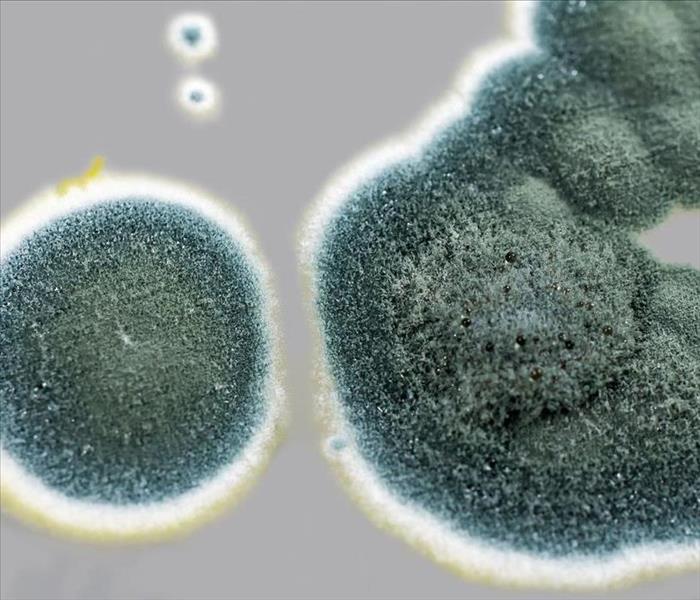 Mold can make you feel sick. Call SERVPRO of Douglasville if you have mold in your home.
Mold can make you feel sick. Call SERVPRO of Douglasville if you have mold in your home.
Mold growth is a complicated issue for homeowners to have to face. While mold can only grow if the conditions are right, there are many instances where this is the case—and once mold establishes itself, it is extremely difficult to fully get rid of it without professional help with the remediation process.
Fortunately, the conditions where mold is likely to grow can be abated in most instances. Because prevention is so important when it comes to mold management, today we will be looking at the conditions that are ideal for mold to grow and how they can be prevented.
The Conditions That Mold is Likely to Grow In
**Warm, humid conditions.** Mold requires moisture to grow, but it does not always have to be standing moisture that allows it to start its process. Humid areas, such as bathrooms, basements and laundry rooms, are prime candidates for mold growth in the home. When the air in an area becomes saturated with humidity, it can lead to high moisture throughout the room which can allow mold to become established.
**Poorly ventilated areas.** Mold spores are spread via the air, so when areas are poorly ventilated, it is much easier for mold to settle in one spot and begin to reproduce. This is doubly concerning as areas with poor air circulation are also typically areas with high humidity, which can create an even more ideal environment for mold spores to land in. Installing fans or other types of air flow system in areas without much ventilation is a great way to prevent mold.
**Any area with untreated moisture damage.** Mold will often establish itself around water damage, as it thrives on moisture. Any area that has a buildup of moisture is ripe for mold growth, which means hidden leaks are often first identified by the signs of mold around the area. This is why it is so important to have water damage abated quickly and professionally when it occurs, because the longer it is left untreated (or if it is untreated properly), the worse a mold problem is able to become.
*If you are in need of mold remediation or would like to learn more, we would love to help. Contact us today to learn more about our mold remediation services!*
What Types of Places Are Likely to Attract Mold Growth?
3/2/2022 (Permalink)
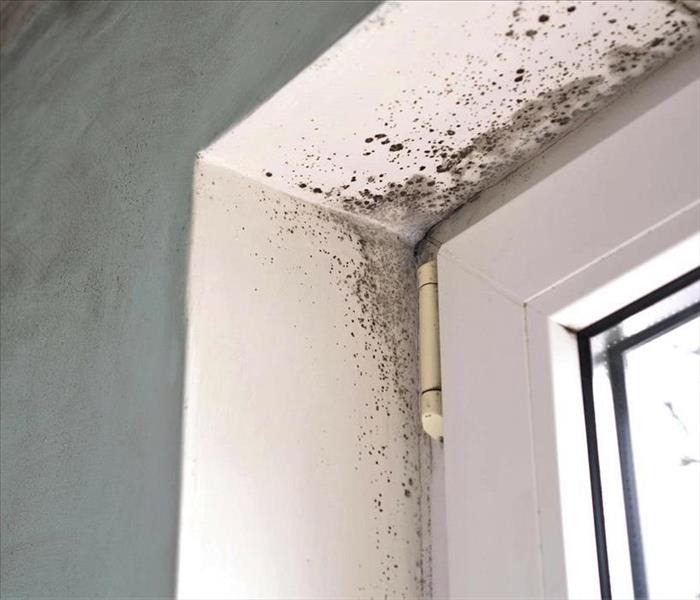 If invades your home, call SERVPRO of Douglasville to evict it!
If invades your home, call SERVPRO of Douglasville to evict it!
Mold growth can be a frightening thing for homeowners to deal with. It is an insidious and stubborn problem that can cause significant damages if not treated quickly and professionally by mold remediation experts—but how do you know if you are at risk of experiencing mold growth?
One of the only positives about mold is the extremely specific conditions that it needs to grow. Mold is only likely to be found in a few places where the environment is right for it to be able to take hold.
Below, we will be taking a look at what these places are so homeowners know exactly where to keep their eye out for these harmful spores. Preventing mold and treating it quickly when it does arise is the best way to stop the issue from getting out of hand.
The Places Where Mold Is Likely to Grow
**In bathrooms and laundry rooms.** Mold thrives in areas with high moisture content, so anywhere that experiences regular and high humidity—such as bathrooms and laundry rooms—is likely to be a haven for mold. Establishing consistent airflow and mitigating the humidity in these areas can go a long way in preventing mold from ever growing in these places.
**In basements and crawl spaces.** Basements and crawl spaces are often popular spots for mold to be discovered because of how ideal their conditions are. Not only is humidity typically high in these areas, but they are also often dark and may even experience water damage from ground seepage if they are not properly weatherproofed. Dank odors and condensation in these areas are often a sure sign that mold is likely to take hold.
**In areas that have experienced water damage.** Water damage is a serious issue for several reasons, including the fact that it is likely to give rise to mold growth if it is not treated properly. Whether the water damage is from a hidden leak in the plumbing system or a flooding issue, it is important that it be addressed quickly by water restoration professionals to completely remove the moisture and ensure that mold is not likely to become a lurking threat.
*If you are in need of mold remediation, water damage restoration or would simply like to learn more, we are here 24/7 to help. Contact us today to learn more about our services.*
The 3 Toxicity Levels of Water Damage
2/2/2022 (Permalink)
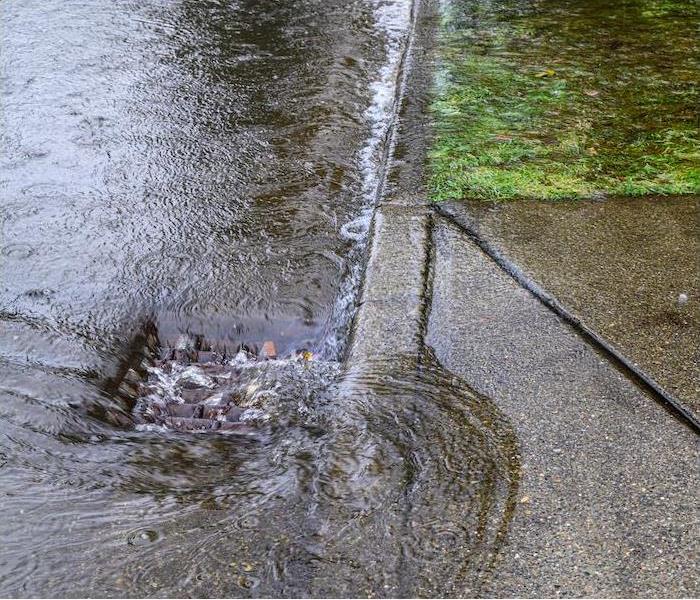 No matter the water damage, we can quickly set things right. Contact the SERVPRO of Douglasville team to learn more.
No matter the water damage, we can quickly set things right. Contact the SERVPRO of Douglasville team to learn more.
Water damage can happen all sorts of ways, and it can certain cause myriad problems, not the least of which is its potential for toxicity. But how do we determine which water sources are toxic and which aren’t? Why isn’t it safe to touch or swim in floodwater, but rain is fine—aren’t they the same?
These distinctions are very important, and there’s a governing body called the Institute of Inspection, Cleaning and Restoration Certification that helps us understand them.
Category 1: Clean Water Damage
Damage from so-called “clean” water is the least worrisome kind of damage, and assumes a certain level of cleanliness from its sources—typically things like refrigerators, water supply lines for appliances or even showers.
The nature of this type of damage means most of the damage mitigation involves simple drying, extracting and dehumidifying, and most instances of clean water damage don’t create health worries.
Category 2: Grey Water Damage
The next category is referred to as “grey” water. The sources of grey water include sources that aren’t inherently or necessarily toxic, but that could or may be—overflow from toilets, backups from an unfiltered sump pump, or even leaks from a washing machine which could have been holding toxic materials during the wash cycle.
Touching water from these sources may not cause immediate harm, but grey water is still to be avoided as it could cause potential danger all the same.
Category 3: Black Water Damage
“Black” water is the nasty stuff. It carries an immediate, inherent risk of toxicity, and it requires immediate action for removal to get these risks mitigated. Sewer backflows, broken toilet bowls containing fecal matter and other septic water fall into this category.
It may surprise you, but overflowing ground and river water fall into this category, as does flood water, because they may contain everything from waste to lawn-care chemicals and parasitic organisms. Black water can cause health effects, and affected surfaces like carpet or sheetrock must be removed. This water is also the most difficult to deal with in the aftermath, because it requires such care in cleanup.
No matter the water damage or the level of toxicity or danger to your home or family, we can quickly set things right. Contact your local SERVPRO team today to find out how we can tackle water problems of any size or nature.
The So-Called 100-Year Flood
2/2/2022 (Permalink)
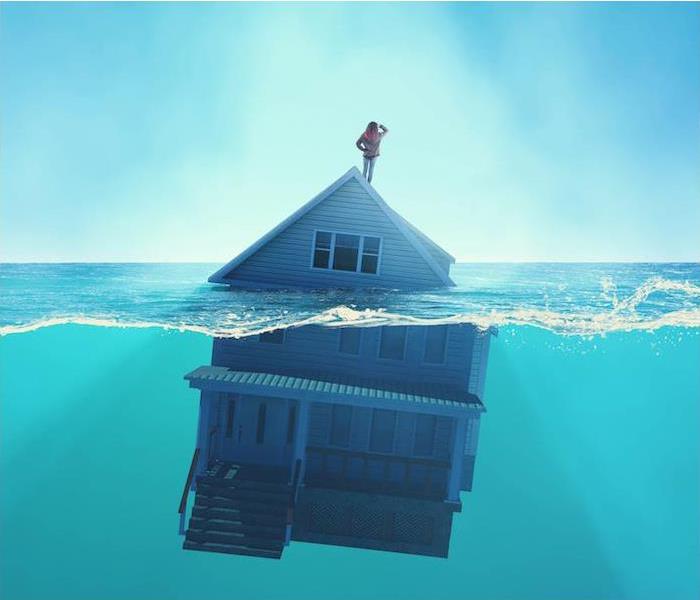 If flooding or other water damage cause trouble for your home or business, contact SERVPRO of Douglasville.
If flooding or other water damage cause trouble for your home or business, contact SERVPRO of Douglasville.
Flood probability is based on a number of factors, and scientists and engineers use a specific set of criteria to determine the likelihood that rivers may flood in heavy storms. Flooding can happen wherever it rains, and it can cause troubles like 2019’s sudden troubles in Conyers; but there’s a certain term on which much of our flood conversation hinges: the “100-year flood.”
It’s a rather foreboding term, one that definitely makes the listener aware that it’s something to be concerned about. But what exactly is it? Is it a general term, or are there actually 100-year floods we can measure and predict?
First, a 100-year flood is a very real, scientific measurement, as opposed to a general declaration like, say, a gullywasher or deluge. Without getting overly technical, a 100-year flood is, in theory anyway, a flood that statistically should only occur about once every 100 years.
In other words, based on data from nearby rivers, bodies of water, elevation levels and other factors, a 100-year flood is a flood that has a 1% chance of occurring in any given year.
This kind of flood is also known as a 1% Annual Exceedance Probability (AEP) flood.
So, does a 100-year flood only occur every hundred years? Well, yes and no. While the average space between them typically does meet that criteria, that doesn’t preclude the possibility of two 1% floods happening in back-to-back decades, years, or even months.
Flooding is unpredictable, but statistically speaking, the 100-year or 1% designation gives us a baseline for estimating the frequency and severity of a certain kind of flood.
Why does all this matter? Well, for one thing, aside from giving us a sense of how bad a flood was or could be, and how likely it may be to occur again, the 1% AEP flood is the basis for the National Flood Insurance Program, which, among other things, requires homeowners within high-risk flood zones to carry flood insurance.
So you can see why it’s important that we have both accurate flooding data and analysis as well as risk prediction. The accuracy of the portrait and prediction of 100-year floods could impact whether your home sits in a high-risk zone or not.
The 1% analysis also helps us plan things like infrastructure, drainage and building needs for flood plain areas.
The last 100-year flooding in our area came in the form of massive floods in September 2009, which resulted in half a billion dollars in damages, and actually reached the 500-year flood designation in some areas, meaning there was only a 0.2% chance of that flood occurring that year in this area.
Flooding isn’t inevitable, but it’s always a possibility when heavy storms overwhelm bodies of water or drainage systems. If flooding or other water damage cause trouble for your home or business, contact SERVPRO for fast, complete cleanup and recovery.
5 Places to Check After a Hard Rain
2/2/2022 (Permalink)
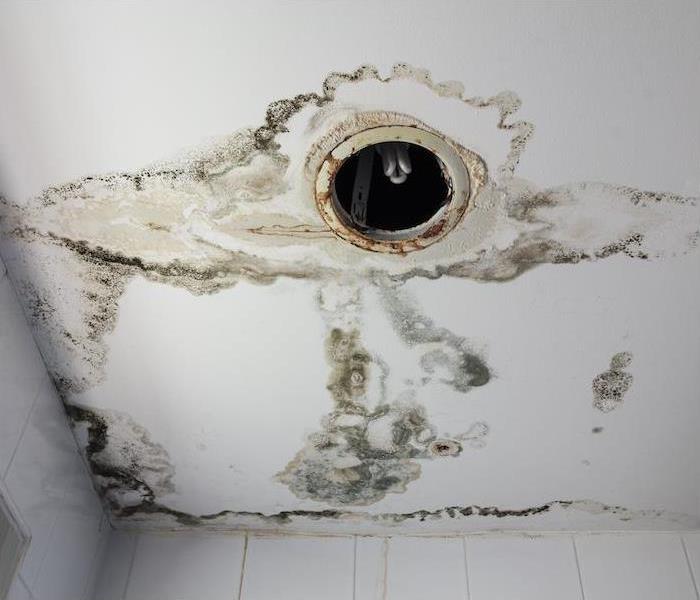 Water damage can come from a number of places. If you find any signs of damage to your property, call SERVPRO of Douglasville.
Water damage can come from a number of places. If you find any signs of damage to your property, call SERVPRO of Douglasville.
We get plenty of rain in the Fayetteville area. The national average for a given city is 38 inches of rain per year, and we beat that average that by more than 10 inches.
Now some of that rain courtesy of your standard, near-daily summer shower. But some of it, as you well know, comes from storms that pack quite a bit more punch.
As a homeowner, it’s incumbent upon you to protect your home as much from water damage as much as possible, or at least to stop it once it’s discovered. So after a heavy rain, here are the places you should check to make sure all is well.
Check your basement. If there’s one solitary place you can anticipate water damage at home, it’s the basement. Homes with basement have a 98% chance of experiencing excess moisture or flooding at some point, so check here first. If you see water pooling, paint bubbling or you smell a damp odor, you may have an issue.
Crawlspaces and attics. Much like the basement, these areas can become inundated with moisture. If you have a crawlspace instead of a basement, it’s subject to the same kind of moisture issues, and attic moisture can reveal to you that there’s a leak somewhere in the roof.
Check on your sump pump. Your sump pump works hard to move water away from your house during a big storm. You should test your pump quarterly, or after any major rainfall.
Examine your gutters. Your gutters catch more than rain, and there are plenty of ways for them to get clogged or even damaged. In particularly heavy rains, gutters can be overwhelmed by water flow, and that becomes even more likely if they are obstructed due to built-up dirt, granules from roof shingles, twigs and leaves.
Inspect your roof. You don’t have to get up on a ladder every time it rains, but after a heavy storm, particularly if you have overhanging tree branches, take a good look at your roof from the ground. If you notice anything that looks off—broken or warped shingles, unfastened flashing or gutters that seem out of place—call a professional to conduct a full examination.
Water damage can come from a number of places at home. If you find a source of water leakage has done harm to your property, call your local SERVPRO for fast, expert help.
So You’ve Got a Sewage Backup
1/31/2022 (Permalink)
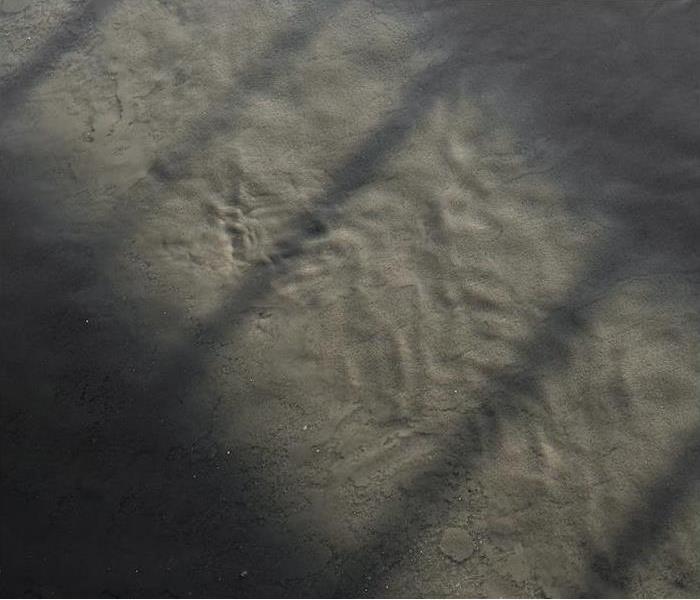 Sewage backup can be a serious problem, reach out SERVPRO of Douglasville to learn more.
Sewage backup can be a serious problem, reach out SERVPRO of Douglasville to learn more.
Water damage can be rough stuff in any form. Burst pipes, flooding and appliance issues all create difficult situations in their own right. But a sewage backup can be an entirely other level of both nastiness and danger.
Sewer problems can be the result of civil sewer systems that have aged past their primes, tree roots growing into sewer lines or blockages of a sanitary sewer main. Regardless of the cause, however, one thing is clear (or literally probably not clear at all)—sewer backups introduce toxins into your home, and they leave a difficult cleanup job in their wake.
When you find yourself faced with sewer damage, here are some things you should do immediately upon discovering the damage to ensure your safety and get things under control until your local SERVPRO team arrives.
Evacuate anyone vulnerable from the area. This includes seniors, children, even pets—anyone who may suffer more readily from the toxins sewage can introduce into your home’s atmosphere. Keep them safely away from the backup area until restoration is complete.
Shut off your main water supply and electricity if it’s safe to do so. If you can get to your power panel and water main safely, use them to stop the flow of water and decrease the odds of your water backup causing an electrical fire. Don’t do this if your electrical panel is under water, or if you would have to stand in water to turn it off. If you can’t safely shut off your own power and water, call your utility companies and have them do it.
Open windows in the affected area to encourage ventilation and get some fresh air flowing in.
Document your situation and take lots of photos for your insurance company. Be sure to include any items that have sustained damage, as these will be important for your insurance claim process.
Add a little bleach to standing water, if you can do so safely, so that the chlorine in it can do some disinfecting work and prevent the spread of bacteria. Don’t touch stained or affected areas, and don’t come in contact with what could be very dangerous water.
Don’t forget to call SERVPRO. We’ll be there quickly, get things cleaned and managed thoroughly, and we can work with your insurance company on your behalf.
Regardless of the cause of your sewage problem, SERVPRO has the tools and techniques to make it "Like it never even happened."
Sewage backup is a serious problem, but we can take care of it and restore your home after the damage. Contact SERVPRO anytime to get the pros on your side.
What to Do When You Need a Storm Shelter
12/28/2021 (Permalink)
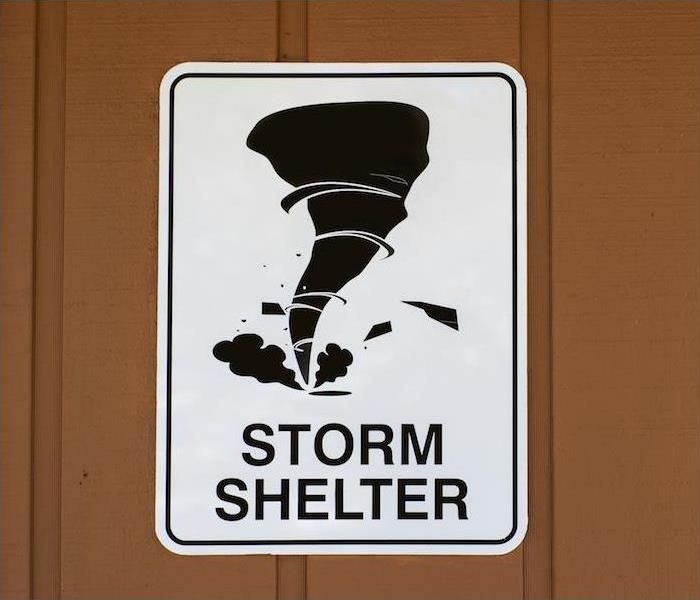 If a storm should strike and do damage to your home, SERVPRO of Douglasville is here to help.
If a storm should strike and do damage to your home, SERVPRO of Douglasville is here to help.
Some storms are worse than others—ask anyone who was around Conyers in April 1973, and they’ll likely have a crystal-clear story to tell you about the worst storm in Georgia history and what felt different about that day.
You can’t always see that kind of destruction coming, and the unfortunate truth is that some day a weather event may take place that may cause you to suddenly be in a place where staying or returning to your home isn’t a safe option.
In the following blog we’ll go through what you need to know—how to find a reputable shelter nearby, how to know if you’re eligible, what to bring and what to expect.
Find a reputable shelter, such as a Red Cross shelter. Red Cross shelters are free and open to absolutely anyone in need due to a disaster or emergency. Service animals (not pets) are also welcome, and the shelter can assist with food or supplies.
The Red Cross provides a searchable map on their website, which can help you find the nearest shelter. Additional shelters open during a crisis, so it always pays to check.
If you have special needs or have requests regarding food, supplies or religious requirements, the Red Cross volunteers will do what they can to accommodate you and make you comfortable.
You can bring certain items with you, such as bedding, clothing and medication. If you have children who have a beloved special stuffed animal or blanket, they are welcome to bring it for comfort.
You can also bring your own emergency kit. Of course, if you don’t have time to pack these things before you evacuate, or the emergency happens while you are away from your home, the shelter will do everything possible to get you what you need.
Don’t bring weapons, illegal drugs or alcohol to the shelter; they will not be allowed inside.
Your Red Cross shelter will provide a safe refuge from the storm or disaster event, food and water, first-aid and basic health services, as well as a laundry list of other helpful things like childcare, laundry and access to case workers who can assist you with recovery.
Red Cross shelters remain open until all guests have procured a safe place to stay, and they will help you as needed when you return home, or if you need assistance finding a temporary place to stay while your home is repaired.
There may be other shelters available in the event of an emergency as well, but you always know the Red Cross is a trustworthy sign of help in a crisis.
If a storm should strike and do damage to your home, SERVPRO is here to help. Contact us anytime to make a connection or find out how we can help restore or even rebuild your home after a weather emergency.
Why We Approach All Damages With a Restoration-First Mindset
10/6/2021 (Permalink)
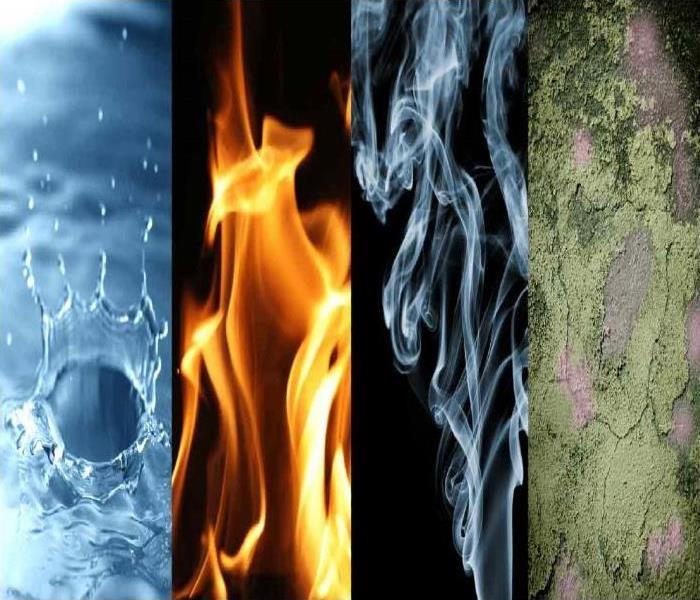 If you have sustained damage and are not sure what comes next, you can depend on SERVPRO of Douglasville to help you with the restoration process.
If you have sustained damage and are not sure what comes next, you can depend on SERVPRO of Douglasville to help you with the restoration process.
If you sustain damage to your home, whether it be due to a fire, a flood or some other type of scenario, it can be difficult to know what comes next. Many people who have never had serious damages before might assume that a damaged area must be completely rebuilt and that all items must be liquidated and replaced—but when you work with us, that is not necessarily the case.
When we approach household damages, we do so with a restoration-first mindset. After helping countless families in the area recover from various damages, we understand how helpful it is to have your items restored instead of replaced.
Not only are many things irreplaceable due to sentimental value, but being able to keep your belongings also saves you time and money as your family works on recovering emotionally from the event.
The Benefits of Our Restoration-Focused Approach
We can salvage many irreplaceable items. While an insurance adjuster can easily come in and provide you with a dollar value for everything in your home, we understand that it is not always that simple. Objects such as family heirlooms and photographs could never be replaced for any amount of money, which is why we will do everything we are able to restore them instead.
We are able to work with your insurance. If you are able to claim damages on your insurance, such as in the event of water damage, you certainly should—however, this can lead to a higher premium as a result. We will work directly with your insurance to lower the costs with restoration instead of liquidation to save you money.
We can make your items safe for use again. There are many things to consider when an object is damaged by fire and water, such as lingering smoke and soot odors or the possibility of mold beginning to grow. However, we have the technology to make sure your items are totally safe to use once more. We can clean, deodorize and sanitize your items so you can be certain they are safe for your family to use.
If you have sustained damage and are not sure what comes next, you can depend on us. Contact us at any hour to see how we can help you with every aspect of the restoration process.
Sneaky Ways Leaks Can Hide From Homeowners
9/13/2021 (Permalink)
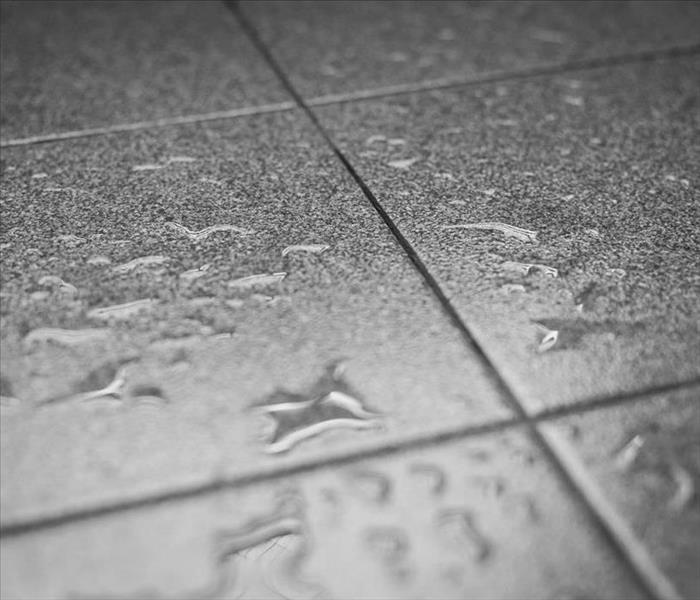 If you discover water damage from a hidden leak in your home, SERVPRO of Douglasville is here to help.
If you discover water damage from a hidden leak in your home, SERVPRO of Douglasville is here to help.
Discovering that your home has a water leak is always a frustrating experience, but if you
discover that a leak has evaded you for an extended period of time? That can be extra
annoying!
While many leaks will make themselves known quickly so that homeowners can address them,
there are sneaky places that a leak can hide in plain sight for ages until it is finally discovered—but by then, the water damage will be done.
Not only can the water damage from leaks be frustrating to have repaired, but it can also be
costly. It is estimated that household leaks account for 10,000 wasted gallons of water every
single year.
Fortunately, by checking for leaks in these common hiding places, you can be certain you are not missing any that will lead to major restoration requirements later on! Read on to get your checklist of places to inspect in your home regularly.
Places to Check for Sneaky Household Leaks
Around your tub and shower inserts. Did you know that splash leaks are the most common
type of bathroom leak there is? Splash leaks occur when water escapes outside of your tub or
shower door and impacts an area that is not equipped to deal with water. Often, the seal at the bottom of your tub insert will be the biggest victim, as water can work its way into this crack and damage your floor and subfloor. Caulking over this area and any others in the splash zone
regularly can put a stop to errant droplets causing issues.
Around the base of your bathroom toilet. Leaks from the toilet flange (where the toilet meets the waste pipe in the floor) are especially insidious because they grow worse with every flush but are often not noticed until they become severe. If you notice that the toilet rocks slightly, that there is staining around it on the floor or that there is an issue with the ground feeling spongy around the toilet, that may be a sign that you have a toilet flange leak on your hands.
Around your outdoor spigots. The spigots around your home are convenient when it comes
to gardening and watering the lawn, but they can also be common culprits of hidden water damage. Because these spigots are exposed to fluctuating temperatures, they can age quickly, so check the area regularly to spot any hidden leaks early on.
If you discover water damage from a hidden leak in your home, we are here to help. Contact us
today to learn more about our water damage restoration services for homeowners.
Our Thorough Water Damage Inspection Process
7/21/2021 (Permalink)
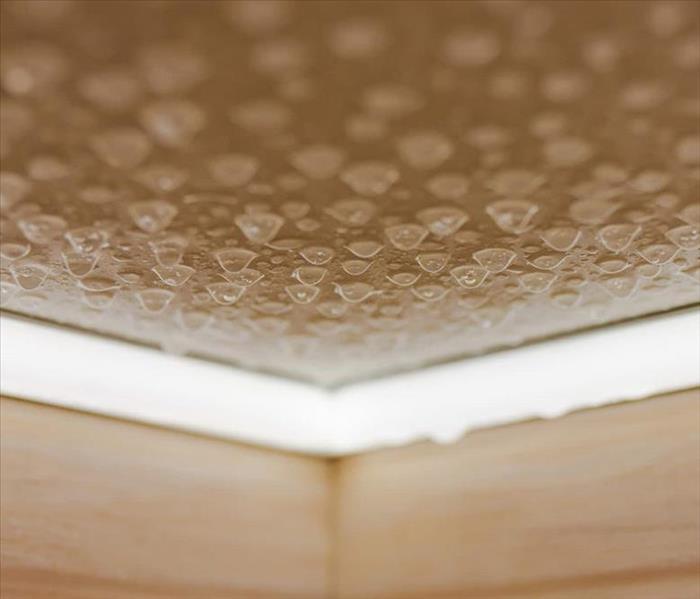 If you have had water damage to your home, you can count on SERVPRO of Douglasville to help you recover.
If you have had water damage to your home, you can count on SERVPRO of Douglasville to help you recover.
When you call us for water damage, you can be certain that you will receive a complete water restoration process that addresses all possible points of damage. One of the ways that we ensure this is by doing a complete and thorough inspection during our water damage restoration process.
Once you get in touch with us, our highly trained technicians will respond quickly and do a full inspection to create a water damage restoration plan. Here’s how it works:
- Identify and Stop Continuing Water Flow
If the water is due to something such as a broken pipe or plumbing issue, it is possible that moisture may still be seeping into the area undetected. We will do a complete assessment to determine if there is still an active flow of water due to a leak and if so, we will stop it to prevent any further damage from occurring.
- Define the Classification of Water
Understanding the categorical classification of the water damage will help us determine the severity and how to proceed with the repairs. There are three types of water damage categories that are possible when damage is present.
- Category 1 Water consists of clean water that is not contaminated.
- Category 2 Water is contaminated with chemical or biological byproducts, which can be common after dishwashers or sump pumps overflow.
- Category 3 Water is severely contaminated, often caused by floods or sewage overflows, and can cause serious health issues.
- Inspect the Area and Determine the Extent of the Damage
Water damage can be especially tricky because it can impact areas that are not immediately visible to the naked eye. Moisture can seep into drywall and impact the structure of the home, which can also affect adjacent rooms that were not touched by flooding. We will do a full inspection to determine just how far-reaching the damage is so you can have a full and complete restoration that leaves no affected area untreated.
If you have had water damage to your home, you can count on us to help you recover. Contact us at any hour to set our water damage restoration plan in motion.
Science of Drying
7/21/2021 (Permalink)
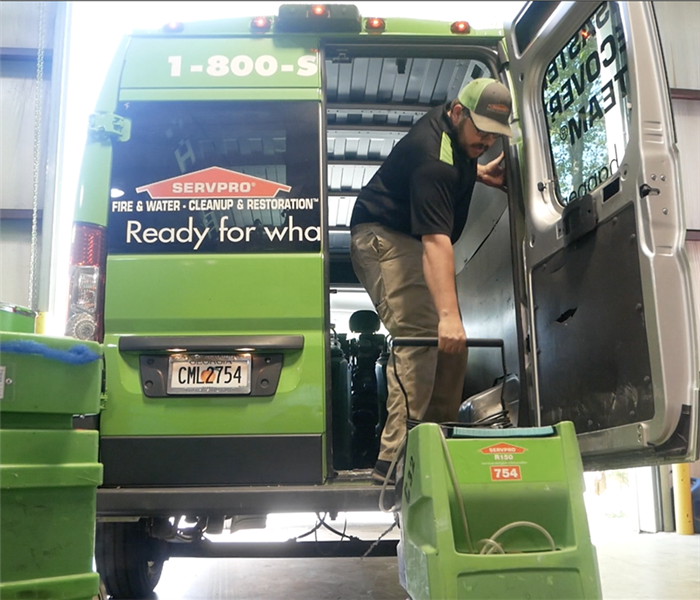 SERVPRO® of Douglasville professionals have the training and equipment to help make water damage "Like it never even happened."
SERVPRO® of Douglasville professionals have the training and equipment to help make water damage "Like it never even happened."
Did you know there is actually a science behind the process of drying? Having the knowledge of psychrometrics is essential to restoring a water-damaged structure to its preloss condition. While your initial reaction may be to grab a few towels to mop up the mess and place a fan or two around the damaged area, SERVPRO® of Douglasville professionals are trained in the science of drying and follow strict industry-approved standards to help lower the chances of any secondary damages. If your home or business suffers a water damage, SERVPRO® of Douglasville will inspect the building to detect every component that is wet to help prevent secondary damage from happening; measure how much moisture is in wet materials and monitor whether the materials are drying properly; and speed up Mother Nature by using professional drying equipment.
What exactly does it mean to help "speed up Mother Nature?" A wet building can often dry naturally because the environment always seeks equilibrium. When materials are wet, moisture will naturally move to drier air at the surface of the material?but only if the air is, indeed, drier. The only problem is nature often takes too long and secondary damages may occur while the building is drying out.
SERVPRO® of Douglasville has the tools to help Mother Nature along, including equipment to help dry hardwood floors, tough-to-reach spaces inside walls, and much more. SERVPRO® also uses state-of-the-art monitoring equipment and a proven scientific process to help accelerate the drying of your home or business.
It's not only the equipment, but the technology too! SERVPRO® pf Douglasville utilizes DryBook™, a proprietary tool that provides real-time documentation and updates on the drying process and helps ensure industry drying requirements are met. With DryBook™ Mobile, you have the ability to know exactly where your property is in the drying process.
The bottom line? SERVPRO® of Douglasville professionals have the training and equipment to help make water damage "Like it never even happened."
*Source Restoration Newsline Vol 32, Iss 7
Restoring Your Business After a Flood
7/20/2021 (Permalink)
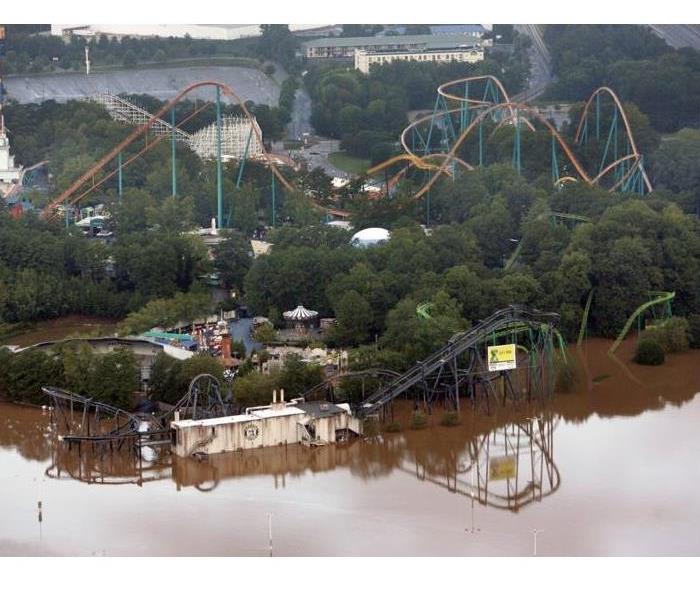 SERVPRO of Douglasville is your local restoration experts for restoring your business following a flood.
SERVPRO of Douglasville is your local restoration experts for restoring your business following a flood.
Floods can be miserable ordeals, even with extensive preparation. They can spring up with little to no warning and saddle you with the responsibility of a lengthy, expensive restoration period. Your business could be
underwater in a flash, and you could be faced with mounting repair bills and extended interruption to your business.
But floods can also be regenerative. Large-scale damage to your business is an opportunity to rebuild and minimize potential damage and disruption that could be caused by future floods. If your business has sustained flood damage, do not panic. Think of it as a chance to fortify your business against future flood damage rather than nothing but a ruinous misfortune.
Cleaning Up After a Flood
Once floodwaters start to recede, you may want to immediately get your hands dirty and start the cleanup effort. Fight that urge. Never re-enter premises until you are absolutely sure they are safe. Floods leave multiple hazards in their wake, such as exposed wires, weakened buildings and contaminated water. Your first priority should be the safety of yourself, your employees and anyone else who might enter or pass near your business.
Local insurers often visit flood-damaged premises and offer guidance after floodwaters start to retreat. Until then, use extreme caution when visiting your business.
Before entering your flood-damaged building:
- Notify your insurer. Take pictures of contents and damage for your insurer—the more the better—but only if it is safe to do so.
- Turn off your building’s gas and electricity, and any fuel taps. Never touch sources of electricity when standing in floodwater.
- Check for structural damage before entering the building. Do not enter if there is any chance it may collapse.
- Assume that all water-damaged structures are unstable until proven otherwise.
- Treat all stairs, floors, roofs and overhangs as unsafe until inspected.
Your insurer will send a loss adjuster and other specialists to assess your business’ damage. After ensuring that your property is stable, it is time to get dirty.
When beginning cleanup efforts, follow this guidance:
- Ensure you and your employees follow every health and safety precaution, such as wearing boots, rubber gloves and other personal protective clothing.
- Use caution when handling debris—it may be contaminated or harbor unseen sharp objects.
- Dispose of equipment only after notifying your insurer.
- Disinfect your property with ordinary household cleaners, but follow the manufacturer’s directions to ensure you are disinfecting properly. Let cleaned surfaces dry completely.
- Open a window and leave the building if you smell gas or hear blowing or hissing—these may be signs of a gas leak.
- Operate electrical equipment only if the ground is dry—never operate electrical equipment that is in or near water.
- Clean any water taps that were submerged in contaminated floodwater with a bleach solution. Let the water run for 30 seconds prior to using it.
- Drain water in stages to avoid disparity between the water pressure inside and outside your building.
- Shovel mud out in stages so the pressure inside and outside remains equal. Remove the rest with a hose, but make sure it is not a high-pressure one—these hoses can blast contaminants into the air.
- Use a pump and generator to remove water. Position the generator outside in the open air if it produces carbon monoxide. Only pump out water once the flood levels outside your property are lower than inside.
- Keep windows and doors open, weather permitting, to expedite drying, but never sacrifice building security.
- Dry your building using a combination of fans, industrial heaters and dehumidifiers. Your insurer may provide these tools.
- Leave central heating on at 68° F or above to encourage drying if it is safe.
Upgrading After a Flood
Make the most out of an unfortunate situation by using your flood damage as an opportunity to repair your property with flood-resistant products. Consider installing the following flood-resistant precautions:
- Pumps and pump systems sit below the ground floor to remove water that enters from the ground.
- Flood skirts which act as barriers around any potential inlet for water.
- One-way valves fit to water pipes to prevent water backing up into your property.
- Water-resistant sealants refer to a wide variety of sealants—you can use them all over your property.
- Plastic fittings in kitchen or lavatory areas are more durable than reconstituted wood, which disintegrates in a flood.
- Electrical sockets, fuse boxes and wiring should sit at least 12 inches above the 100-year flood level in your area to prevent water damage.
- High shelving is a convenient option for ensuring you have an area above floodwater to store valuable items.
No matter what you install, the ultimate preparation for a flood is proper insurance. Remember that your damaged stock and premises will not be the only setback you suffer from a flood—interruption to your business’ continuity can be fatal. Purchase a comprehensive policy tailored to your specific industry and location that accounts for business interruption. Taking risk-reduction measures may help cut down your premium or excess.




 24/7 Emergency Service
24/7 Emergency Service


















